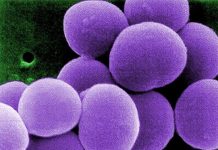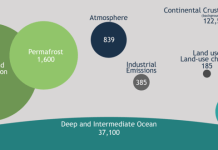Viral proteins are administered as antigen in the form of a vaccine and the immune system of the body forms antibodies against the given antigen thus providing protection against any future infection. Interestingly, this is first time in human history that the corresponding mRNA itself is being given in the form of a vaccine that uses the cell machinery for expression/translation of the antigen/protein. This effectively turns cells of the body into factory for producing antigen, which in turn provides active immunity by generating antibodies. These mRNA vaccines have been found to be safe and effective in human clinical trials. And, now, the COVID-19 mRNA vaccine BNT162b2 (Pfizer/BioNTech) is being administered to the people as per the protocol. As the first duly approved mRNA vaccine, this is a milestone in science that has ushered in new era in medicine and drug delivery. This could soon see application of the mRNA technology for cancer treatment, range of vaccines for other diseases, and thus possibly changing practice of medicine and shape pharmaceutical industry altogether in future.
If a protein is needed inside a cell for treating a diseased condition or to act as an antigen for development of active immunity, that protein needs to be delivered into the cell safely in the intact form. This still is an uphill task. Could the protein be expressed directly into the cell by injecting the corresponding nucleic acid (DNA or RNA), which then uses the cellular machinery for expression?
A group of researchers conceived the idea of nucleic acid encoded drug and demonstrated for the first time in 1990 that direct injection of mRNA in to mouse muscle led to expression of encoded protein in the muscle cells(1). This opened up the possibility of gene-based therapeutics, as well as gene-based vaccines. This development was considered as a disruptive technology against which future vaccine technologies will be measured (2).
The thought process quickly shifted from ‘gene- based’ to ‘mRNA-based’ information transfer because mRNA offered several advantages compared to DNA as mRNA neither integrates in the genome (hence no detrimental genomic integration) nor does it replicate. It has only elements directly required for expression of protein. Recombination between single stranded RNA is rare. Moreover, it disintegrates within few days within the cells. These features make mRNA more suitable as a safe and transient information carrying molecule to act as vector for gene-based vaccine development (3). With advances in technology particularly relating to the synthesis of engineered mRNAs with right codes that could be delivered into the cells for protein expression, the scope further broadened from vaccines to therapeutic drugs. Use of mRNA started getting attention as a drug class with potential application in the areas of cancer immunotherapies, infectious disease vaccines, mRNA-based induction of pluripotent stem cells, mRNA-assisted delivery of designer nucleases for genome engineering etc. (4).
Emergence of mRNA-based vaccines and therapeutics got further fillip by results from pre-clinical trials. These vaccines were found to elicit potent immune response against infectious disease targets in animal models of influenza virus, Zika virus, rabies virus and others. Promising results have also been seen by using mRNA in cancer clinical trials (5). Realising the commercial potential of the technology, industries made huge R& D investments in mRNA-based vaccines and drugs. For example, until 2018, Moderna Inc. may already have invested more than a billion dollars while still years away from any marketed product (6). Despite concerted efforts towards use of mRNA as a therapeutic modality in infectious disease vaccines, cancer immunotherapies, treatment of genetic diseases and protein replacement therapies, the application of mRNA technology has been restricted due to its instability and proneness to degradation by nucleases. Chemical modification of mRNA helped a bit but intracellular delivery still remained a hurdle though lipid-based nanoparticles are used to deliver mRNA (7).
Real thrust to the progress of mRNA technology for therapeutics came, courtesy unfortunate situation presented by the worldwide COVID-19 pandemic. Development of safe and effective vaccine against SARS-CoV-2 became the topmost priority for everyone. A large scale multicentric clinical trial was conducted to ascertain safety and effectiveness of COVID-19 mRNA vaccine BNT162b2 (Pfizer/BioNTech). The trial started on January 10, 2020. After about eleven months of rigorous work, the data from the clinical study proved that COVID-19 is preventable by vaccination using BNT162b2. This provided proof of concept that mRNA-based vaccine can provide protection against infections. The unprecedented challenge posed by the pandemic helped prove that a mRNA-based vaccine can be developed at fast pace, if sufficient resources are made available (8). Moderna’s mRNA vaccine also received emergency use authorisation by FDA last month.
Both the COVID-19 mRNA vaccines i.e., BNT162b2 of Pfizer/BioNTech and Moderna’s mRNA-1273 are now being used to vaccinate people as per the national protocols for administration of vaccine (9).
The success of two COVID-19 mRNA (BNT162b2 of Pfizer/BioNTech and Moderna’s mRNA-1273) vaccines in clinical trials and their subsequent approval for use is a milestone in science and medicine. This has proved a hitherto unproven, high potential medical technology that scientific community and pharmaceutical industry has been pursuing for almost three decades (10).
The new enthusiasm following this success is bound to gather energies after the pandemic and mRNA therapeutics would further prove to be a disruptive technology ushering in a new era in medicine and the science of drug delivery.
***
References
- Wolff, J. A. et al., 1990. Direct gene transfer into mouse muscle in vivo. Science 247, 1465–1468 (1990). DOI: https://doi.org/10.1126/science.1690918
- Kaslow DC. A potential disruptive technology in vaccine development: gene-based vaccines and their application to infectious diseases. Trans R Soc Trop Med Hyg 2004; 98:593 – 601; http://dx.doi.org/10.1016/j.trstmh.2004.03.007
- Schlake, T., Thess A., et al., 2012. Developing mRNA-vaccine technologies. RNA Biology. 2012 Nov 1; 9(11): 1319 1330. DOI: https://doi.org/10.4161/rna.22269
- Sahin, U., Karikó, K. & Türeci, Ö. mRNA-based therapeutics — developing a new class of drugs. Nature Review Drug Discovery 13, 759–780 (2014). DOI: https://doi.org/10.1038/nrd4278
- Pardi, N., Hogan, M., Porter, F. et al., 2018. mRNA vaccines — a new era in vaccinology. Nature Review Drug Discovery 17, 261–279 (2018). DOI: https://doi.org/10.1038/nrd.2017.243
- Cross R., 2018. Can mRNA disrupt the drug industry? Published September 3, 2018. Chemical & Engineering News Volume 96, Issue 35 Available online on https://cen.acs.org/business/start-ups/mRNA-disrupt-drug-industry/96/i35 Accessed on 27 December 2020.
- Wadhwa A., Aljabbari A., et al., 2020. Opportunities and Challenges in the Delivery of mRNA-Based Vaccines. Published: 28 January 2020. Pharmaceutics 2020, 12(2), 102; DOI: https://doi.org/10.3390/pharmaceutics12020102
- Polack F., Thomas S., et al., 2020. Safety and Efficacy of the BNT162b2 mRNA Covid-19 Vaccine. The New England Journal of Medicine. Published December 10, 2020. DOI: https://doi.org/10.1056/NEJMoa2034577
- Public Health England, 2020. Guidance – National protocol for COVID-19 mRNA vaccine BNT162b2 (Pfizer/BioNTech). Published 18 December 2020. Last updated 22 December 2020. Available online at https://www.gov.uk/government/publications/national-protocol-for-covid-19-mrna-vaccine-bnt162b2-pfizerbiontech Accessed on 28 December 2020.
- Servick K., 2020. mRNA’s next challenge: Will it work as a drug? Science. Published 18 Dec 2020: Vol. 370, Issue 6523, pp. 1388-1389. DOI: https://doi.org/10.1126/science.370.6523.1388 Available online at https://science.sciencemag.org/content/370/6523/1388/tab-article-info
***






































